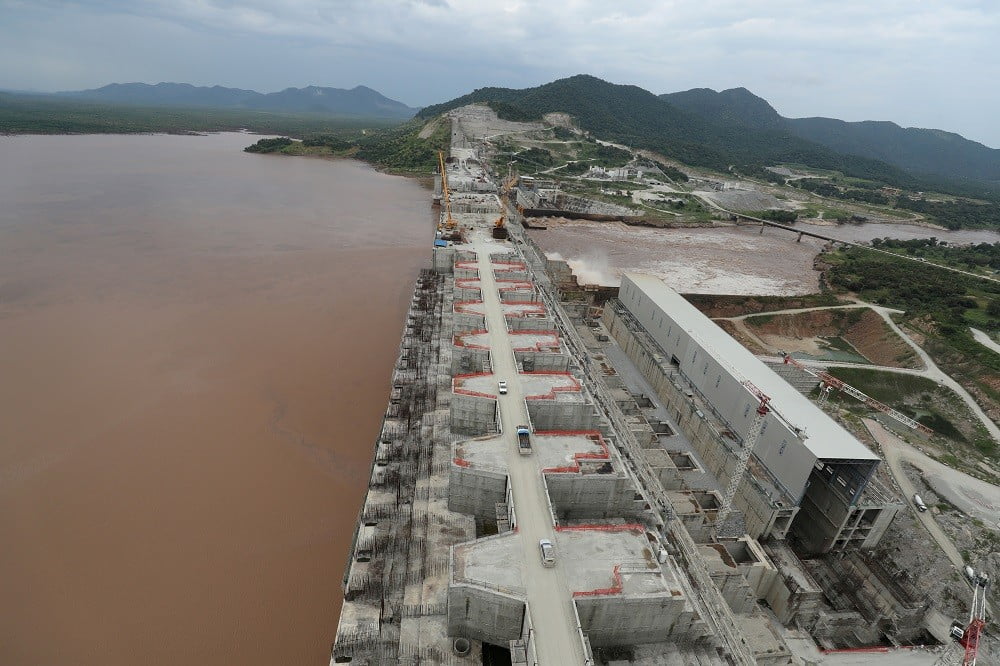![Ethiopia, Egypt, Sudan reach 'major common understanding' on dam New satellite images show the water level in the reservoir behind the nearly completed $4.6bn Grand Ethiopian Renaissance Dam is at its highest in four years [File: Eduardo Soteras/AFP]](https://horndaily.com/wp-content/uploads/2020/07/b473599abdd44a5b9300b3a6c075a82d_18.jpg)
Ethiopia’s prime minister said on Tuesday his country, Egypt, and Sudan reached a “major common understanding which paves the way for a breakthrough agreement” on a significant dam project that has led to sharp regional tensions and fears of military confrontation.
Egypt and Sudan view the dam as a serious threat to vital water supplies, while Ethiopia considers it essential for its electrification and development.
The statement by Abiy Ahmed’s office came as new satellite images show the water level in the reservoir behind the nearly completed $4.6bn Grand Ethiopian Renaissance Dam is at its highest in at least four years.
Last week Ethiopia acknowledged that water was gathering in the dam’s reservoir, though officials said this was a “natural” part of the construction process.
Ethiopia has said the rising water is from heavy rains, and the statement said, “it has become evident over the past two weeks in the rainy season that the [dam’s] first-year filling is achieved and the dam under construction is already overtopping.”
Ethiopia had said it would begin filling the reservoir of the dam, Africa’s largest, this month even without a deal as the rainy season floods the Blue Nile. But the new statement said the three countries’ leaders have agreed to pursue “further technical discussions on the filling … and proceed to a comprehensive agreement”.
The statement did not give details on Tuesday’s discussions, mediated by current African Union chair and South African President Cyril Ramaphosa, or what had been agreed upon.
But the talks among the country’s leaders showed the critical importance placed on finding a way to resolve tensions over the storied Nile River, a lifeline for all involved.

A general view of the Grand Ethiopian Renaissance Dam (GERD) near Guba in Ethiopia [File: AFP]
Ethiopia says the colossal dam offers a critical opportunity to pull millions of its nearly 110 million citizens out of poverty and become a major power exporter.
Downstream Egypt, which depends on the Nile to supply its farmers and booming population of 100 million with fresh water, asserts it poses an existential threat.
Egyptian President Abdel Fattah el-Sisi stressed Egypt’s “sincere will to continue to achieve progress over the disputed issues”, a spokesman’s statement said. It said the leaders agreed to “give priority to developing a binding legal commitment regarding the basis for filling and operating the dam”.
Sudanese Irrigation Minister Yasser Abbas told reporters in the capital, Khartoum, the three leaders “agreed to continue their negotiations to overcome the sticking points.”
He said the negotiations would proceed according to the basic principle of the dam’s “fair and reasonable use”, adding once the agreement has been solidified, Ethiopia will retain the right to amend some figures relating to the dam’s operation during drought periods.
“There are other sticking points, but if we agree on this basic principle, the other points will automatically be solved,” he said.
Both Sudanese Prime Minister Abdalla Hamdok and Ethiopia’s leader called Tuesday’s meeting “fruitful”.
Negotiators have said key questions remain about how much water Ethiopia will release downstream if a multi-year drought occurs and how the countries will resolve any future disputes. Ethiopia rejects binding arbitration at the final stage.
“It is absolutely necessary that Egypt, Sudan and Ethiopia, with the support of the African Union, come to an agreement that preserves the interest of all parties,” Moussa Faki Mahamat, chairman of the AU commission, said on Twitter, adding the Nile “should remain a source of peace”.
Years of talks with a variety of mediators have failed to produce a solution.
Kevin Wheeler, a researcher at the Environmental Change Institute, University of Oxford, said fears of any immediate water shortages “are not justified at this stage at all, and the escalating rhetoric is more due to changing power dynamics in the region.”
However, “if there were a drought over the next several years, that certainly could become a risk,” he said.
The years-long dispute pits Ethiopia’s desire to become a major power exporter and development engine against Egypt’s concern the dam will significantly curtail its water supply if filled too quickly.
Egypt, which is almost entirely dependent on the Nile for its fresh-water supplies, sees the dam as an existential threat. Sudan has long been caught between the competing interests.


